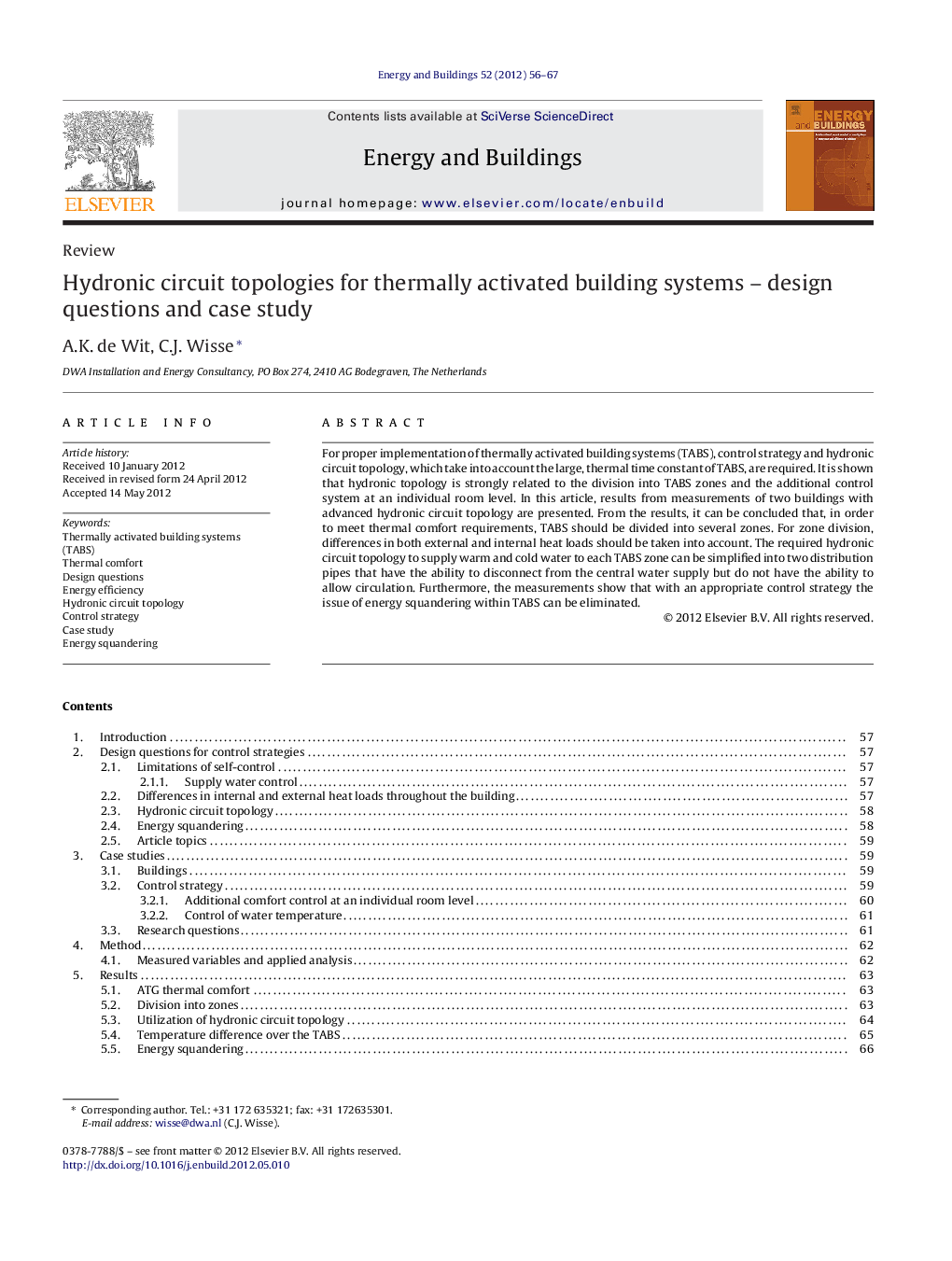| کد مقاله | کد نشریه | سال انتشار | مقاله انگلیسی | نسخه تمام متن |
|---|---|---|---|---|
| 263788 | 504084 | 2012 | 12 صفحه PDF | دانلود رایگان |

For proper implementation of thermally activated building systems (TABS), control strategy and hydronic circuit topology, which take into account the large, thermal time constant of TABS, are required. It is shown that hydronic topology is strongly related to the division into TABS zones and the additional control system at an individual room level. In this article, results from measurements of two buildings with advanced hydronic circuit topology are presented. From the results, it can be concluded that, in order to meet thermal comfort requirements, TABS should be divided into several zones. For zone division, differences in both external and internal heat loads should be taken into account. The required hydronic circuit topology to supply warm and cold water to each TABS zone can be simplified into two distribution pipes that have the ability to disconnect from the central water supply but do not have the ability to allow circulation. Furthermore, the measurements show that with an appropriate control strategy the issue of energy squandering within TABS can be eliminated.
► Design questions for TABS and technical options to address them.
► Results from measurements of two buildings with advanced hydronic circuit topology.
► In order to meet thermal comfort requirements, TABS should be divided zones.
► A hydronic circuit topology with two distribution pipes is sufficient.
► The issue of energy squandering within TABS can be eliminated.
Journal: Energy and Buildings - Volume 52, September 2012, Pages 56–67